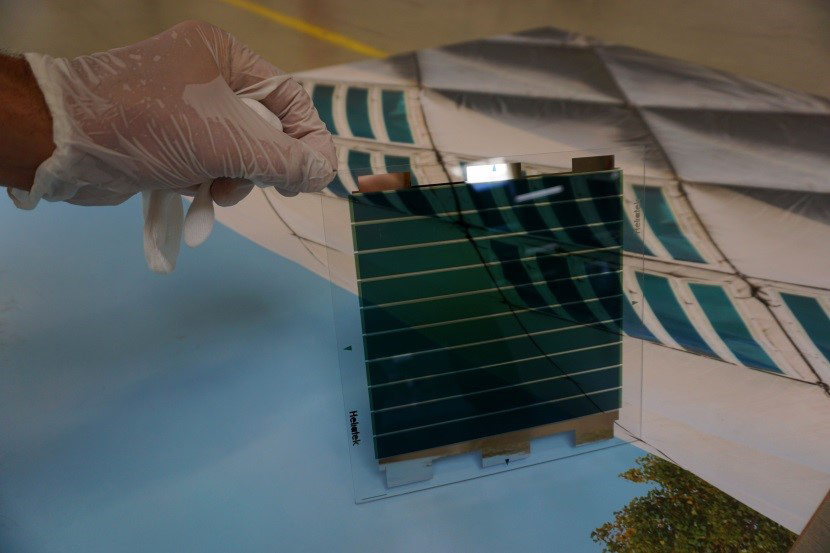Successful completion
BMBF research project: Transparent organic photovoltaic glass facade (TOP)
As part of the funding initiative "Organic Electronics - Fundamentals of Technology and Application Scenarios" the BMBF-funded research project "Transparent Organic Photovoltaic (OPV) glass façade” ended in December 2018 (project name: TOP). The aim of the joint project was to develop semi-transparent solar films with a transparency of 15 – 30% at an efficiency of 8 – 10% and a suitable encapsulation. The consortium consisted of the CreaPhys GmbH (Dresden), the Fraunhofer FEP (Dresden), the Fraunhofer ISE (Freiburg), the Heliatek GmbH (Dresden) and the University of Ulm.
The three-year project TOP addressed the central issue of energy supply in Germany and Europe. In Europe, approximately 20 million m² of glass surfaces are used per year for building facades (office buildings and public facilities). These areas are thus available for alternative energy generation without the need for own space or installation. So far, these areas are not or only partially usable with conventional photovoltaics. Dimensionable solar foils, which can be easily and on large-scale integrated and manufactured in a transparent design, are an attractive solution, e. g. for windows, solar control glazing and transparent facades.
At the University of Ulm various series of novel absorber materials have been synthesized and further developed. On one hand, these materials showed improved light absorption properties and on the other hand increased thermal stability, which is important for the production process.
Creaphys has successfully demonstrated the purification of new absorber materials based on a gas-phase process. The scalability of a bulk material process has been improved. In addition, processes for the purification of further new materials have been established, which are foreseeably included in the next generation of the solar film stack.
At Fraunhofer FEP the optimization of the semi-transparent conductive top contact as well as the improvement of the encapsulation technology to protect the cells from water vapour permeation was carried out.
Using the new absorber materials (University Ulm, Heliatek), Heliatek has developed an organic solar cell with an efficiency of 8% and a transparency of 17.6%. Together with the partner Fraunhofer FEP, the proof-of-principle for a thin-layer encapsulation process by means of ALD (atomic layer deposition) could be shown, which enables lifetime values of solar films above T95 (i. e. less than 5% degradation) after a time of 1000 h at 85°C and 85% humidity.
At Fraunhofer ISE the long-term stabilities of the Heliatek solar cells were investigated in detail. At 85°C, the glass-encapsulated solar cells are stable for more than ten thousand hours and even UV light leads to no noticeable degradation.
At the end of the TOP project, a glass demonstrator with a size of 20 cm × 20 cm was produced:
Heliatek is currently building a new production facility for volume production, which will be ramped up in 2019/20 and has a production capacity of up to 1 million m² of OPV film annually. The production in Germany is also economically viable thanks to the highly productive roll-to-roll process.
The TOP project was funded by the Federal Ministry of Education and Research and was part of the funding program "Photonics Research Germany" (Funding reference: 13N13706).
